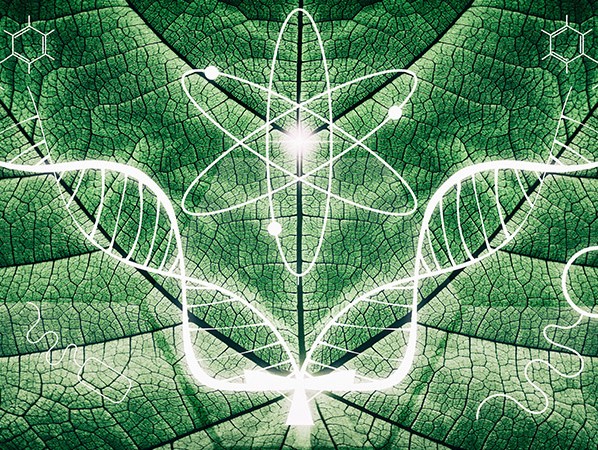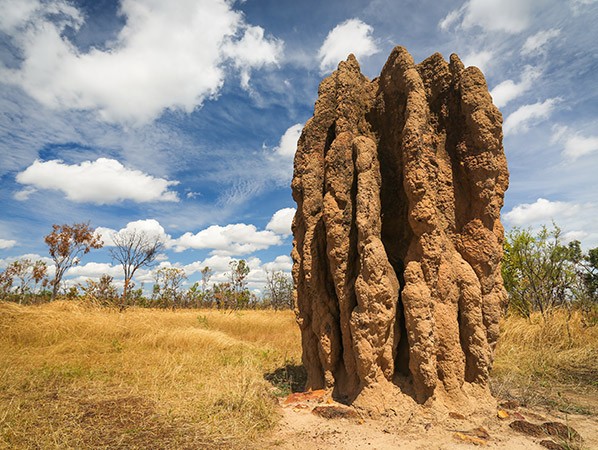
Biomimicry (biomimics - from the Greek 'bios' (life) and 'mimesis' (imitation)) is the science that stands for learning from nature. Still a relatively unknown concept in the Netherlands, but fully embraced abroad. Large, globally operating companies such as Nike, HP, NASA, P & G and Johnson & Johnson are fully engaged in biomimicry. The construction world, too, is discovering mother nature as a catalogue of proven technology.
Bio eh? Biomimicry is about what we can learn from nature. Why do ants never let themselves be hindered if their route is blocked? And: how do bird flocks create a continuous flow? The answers are found in nature. An appealing example of biomimicry is the invention of the Velcro strap. Velcro straps are an invention of Georges de Mestral. This Swiss was walking his dog and was surprised about how difficult it was to get the tangles out of his dog’s fur. He discovered that tangles are covered with small hooks, with which they grip clothes. De Mestral saw the possibilities and developed the closure system that he presented in Switzerland in 1951.
Biomimicry is not a new, but more of a forgotten science. There are countless examples from history where people turned to nature for inspiration. The most famous: Leonardo Da Vinci made sketches of airplanes that were inspired by the wings of a bird. This approach can be applied in any sector and industry. An example from the food industry: Morinaga Milk from Tokyo brings yoghurt onto the market. The company received many complaints: the yoghurt stuck to the lid and consumers got dirty hands when opening the lids. Nature brought the solution in the form of the Lotus effect: the phenomenon that occurs when water or dirt ends up on the leaf of a sacred lotus. It does not stick, but slides off gently. This self-cleaning property is due to lots of very small bumps on the leaf. Morinaga Milk applied this in the product Toyal Lotus: a lid which yoghurt does not stick to, but slides off.
The Mexican company Freshdy specialises in developing packaging for fruits and vegetables, among other things. But they realised that these products actually have a packaging of their own, namely the peel of a potato or banana. Research into these natural packaging materials resulted in microperforated layers in the packaging that gave the products a considerably longer shelf life.
It is not just at the product level that we can learn from nature. “The goal of biomimicry is to use the genius of nature in R&D processes and accelerate the transition to a circular economy”, says Els Martijn, director of the company Firm of The Future and one of the biomimicry pioneers of our country. “Nature is not patented, so you can find inspiration in your backyard, so to speak. Biomimicry is a model, a measure and a mentor: a model because we can learn from the natural processes, a measure because we can learn to build differently using the knowledge of nature, and a mentor because it can guide us in change processes.”

Martijn talks about a request from a company in the food industry. “A large jam manufacturer came to us because the maximum capacity of the production lines had been reached. With a small adjustment to the filling machine, by using the kingfisher beak design, the capacity could be increased by another 15-20%. The examples are endless: by looking at the routing that ants use, crawling together but never touching each other, you can better organise logistical processes. We live in an age of change. Experts have found that disruption accelerates. And who has the most experience with change and disruption? That’s right, nature. That is why it is useful for companies to look at innovation through this lens. What’s more, you don’t have to reinvent the wheel, because it is all ready for the taking.
We can also learn a great deal from nature and its 3.8 billion years of experience in Research & Development and its arsenal of natural techniques when it comes to construction and architecture. Mother nature proves to be an excellent architect: biomimicry leads to a different method of design, the use of unconventional building materials (such as self-cleaning concrete inspired by self-cleaning plants). The existing building techniques are no match for nature: after all, nature always uses less than or precisely the amount of energy and materials needed, has an unprecedented sensitivity and accuracy, optimises different functions simultaneously without effort, works under environmental pressure and temperature, recycles all materials and is also the most important inventor of efficiency and sustainability.
Biomimicry can even determine and change the shape of a building. There are no examples of this in the Netherlands yet, but there are elsewhere in the world. The Eastgate Centre in the Zimbabwean capital Harare is one of the best-known examples of biomimicry in architecture. Office buildings in regions with warm climates use an enormous amount of energy for cooling. To drastically limit this energy consumption, the architect was inspired by termite mounds: termites manage to design complexes in very hot areas that maintain the same temperature almost year-round, day and night, and in which every area has a constant flow of fresh air. Thanks to this technique, the Eastgate Centre only uses 10% of the energy a regular office building of this size would use. Another example: Dives in Mericordia, Italy. This building is another great example of the use of building materials inspired by nature. It is constructed from a special self-cleaning concrete inspired by self-cleaning plants. Special particles in the concrete ensure that dirt that deposits on the concrete oxidises and is simply blown away by the wind. As a result, the building stays beautifully white and energy-intensive cleaning products are not needed.
When you say ‘nature’, what do you think of? Forest? Biology? Fluffy critters? What you probably don’t think of is technology, but as crazy as it sounds: nature is full of it. In almost 4 billion years, fantastic biological solutions have emerged for things like robotics, sensors, high-tech instruments, nanotechnology, water treatment, planning, collaboration, and so on. There are even beetles that use explosions. There is, as it were, a catalogue of ‘proven technology’ to be found in nature, from which we can select and implement as we choose.
Image leaf: ©GIROSCIENCE/SHUTTERSTOCK.COM, Beeld termite mound: ©PIOTR GATLIK/SHUTTERSTOCK.COM
Source: © Vakblad Voedingsindustrie 2019